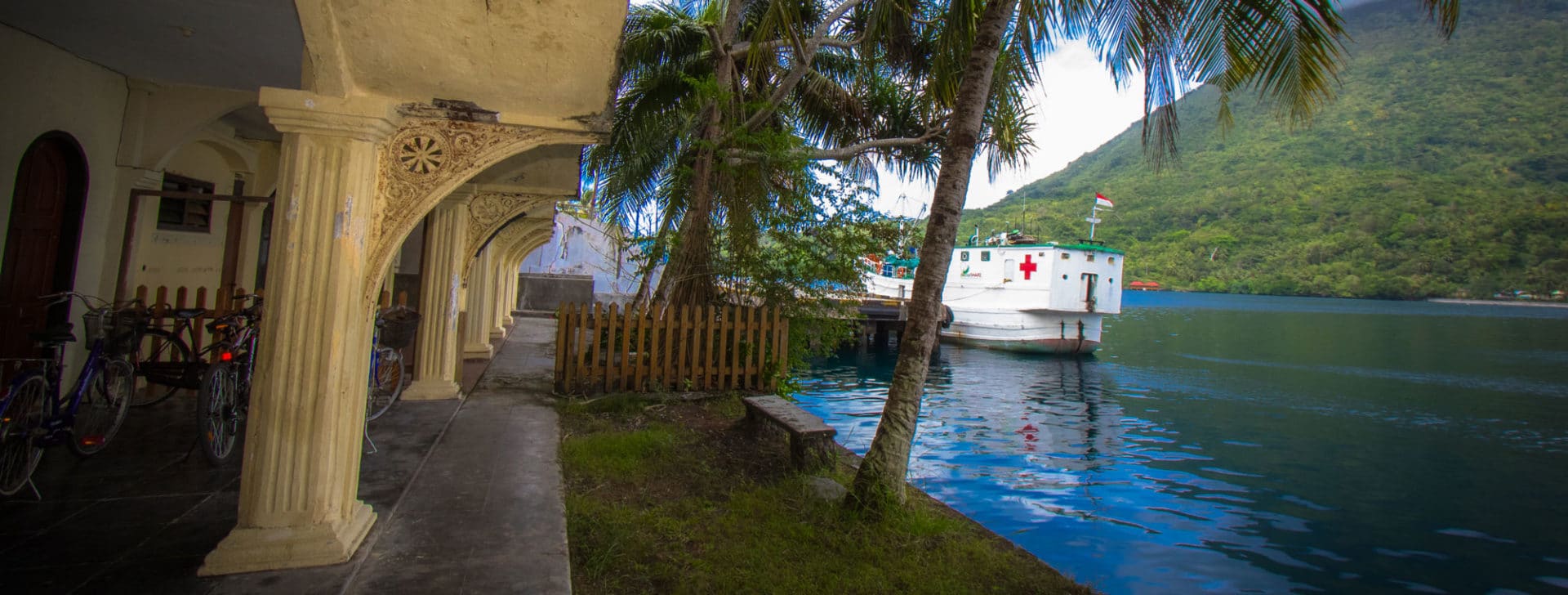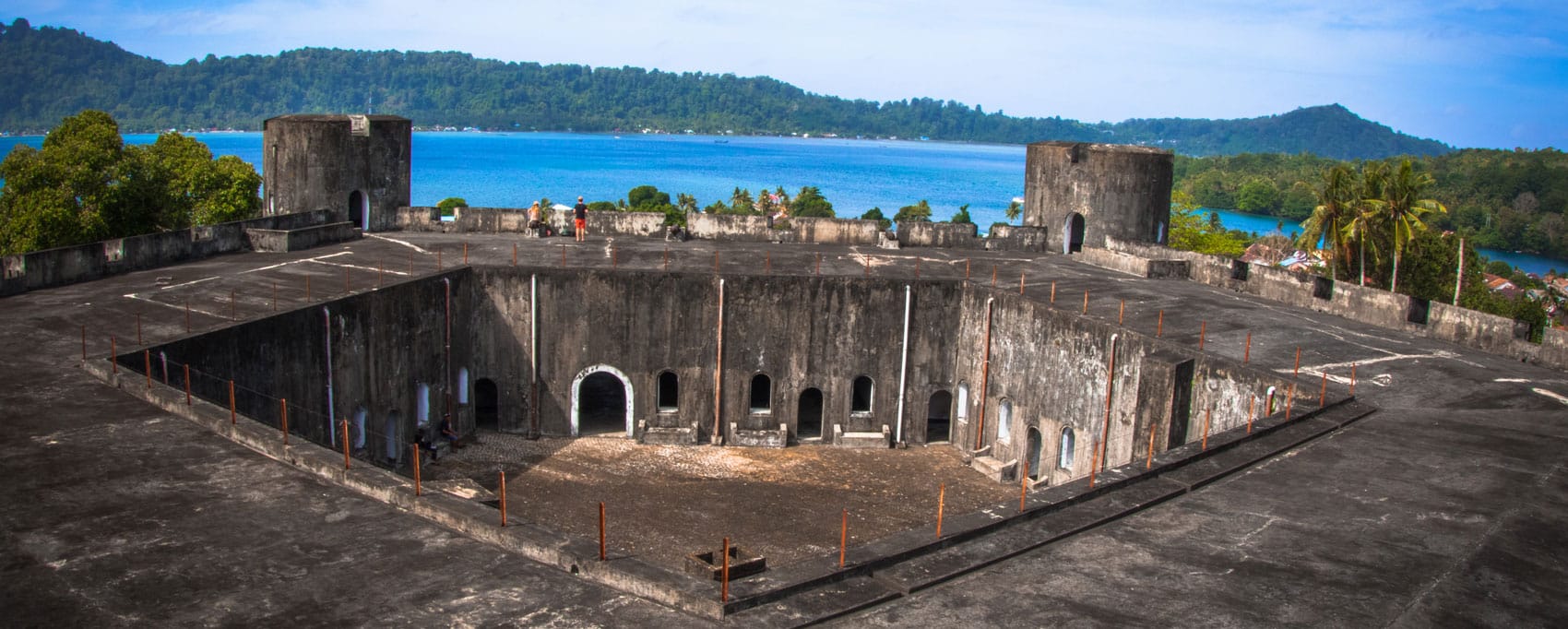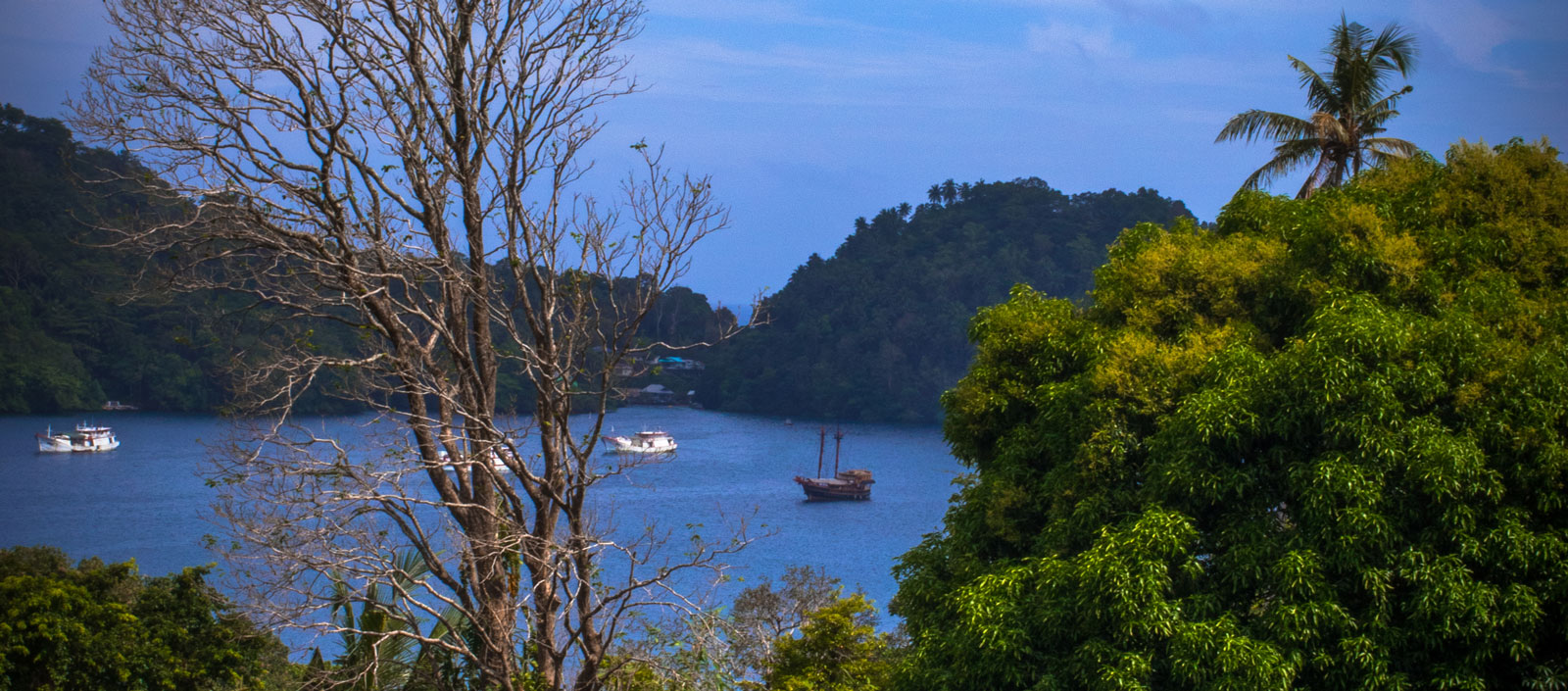Little Banda Neira has always been the Banda’s main port and administrative center with lots of attractions. In the Dutch era the perkeniers virtually bankrupted themselves maintaining the European lifestyle, event after the lost of nutmeg monopoly, made it untenable.
Today, Bandaneira’s sleepy, flower-filled streets are so quiet that two beck count as a traffic jam. It’s a charming place to wander aimlessly, admire tumbledown Dutch villas, ponder smoldering ruins, watch glorious cloudscapes over Gunung Api and trip over discarded cannon lolling in the grass.
Several Dutch-era buildings have been restored. If you manage to gain access (knock and hope!)much of the fan is hearing the fascinating life stories of the septuagenarian caretakers, assuming your Bahasa Indonesia is up to the task.
Benteng Belgica (fortress)
A classic star-fort, the Unesco-nominated Benteng Belgica was built on the hill above Nassau in 1611, when it became apparent the lower bastion was an inadequate defense. The five massive sharp-pointed bastions were expensively crafter to deflect the cannon fire of a potential English naval bombardment. If caused quite a scandal in Holland when. in 1796 the Brits managed to seize it (albeit briefly) without firing a shot.
Benteng Nessau (fortress)
Nassau, quietly crumbling amongst tropical foliage now, was the scene of Banda Mascara, the greatest enormity in the violent history of Dutch Banda. It was built in 1609, against the wishes of local leaders by Dutch Admiral Verchoeff on foundations abandoned by Portuguese 80 years earlier.
The Bandanese, fearing Dutch control, ambushed and executed 40 Dutch “negotiators”, including Verchoeff himself. Unfortunately, the party also contained Jan Pieterzoon Coen, who was to become the fourth Governor-General of the Dutch East Indies, and who retailed (in 1621) with the infamous beheading and quartering of 44 local leaders within the fortress. That followed was the virtual genocide of the Bandanese population.
Hatta’s House (historic building)
Of three early 20th-century “exile houses”, Mohammed Hatta’s House is the most appearing. It’s party furnished and photos of the dissident, his typewriter, distinctive spectacles, and neatly folded suite are all on display. In the courtyard, where there are vintage clay cisterns and an old brick well sprouting with bromeliads, you’ll also find a schoolhouse that Hatta founded during his exile. It’s literally built into the hillside.
Schelling House (historic building)
This massive, columned house, owned by the daughter of the mast Banda king, will inspire “I could live here” fantasies. it has a leafy courtyard, high ceilings and, in the master bedroom, a stone tub resting against exposed coral wall. And definitely wonder up to that special shattered loft in the rear courtyard.
Calico Jack goes to Banda Neira every year not only to explore its underwater beauty but to touch the unique history of this area. Follow our schedule to find the next trip.




